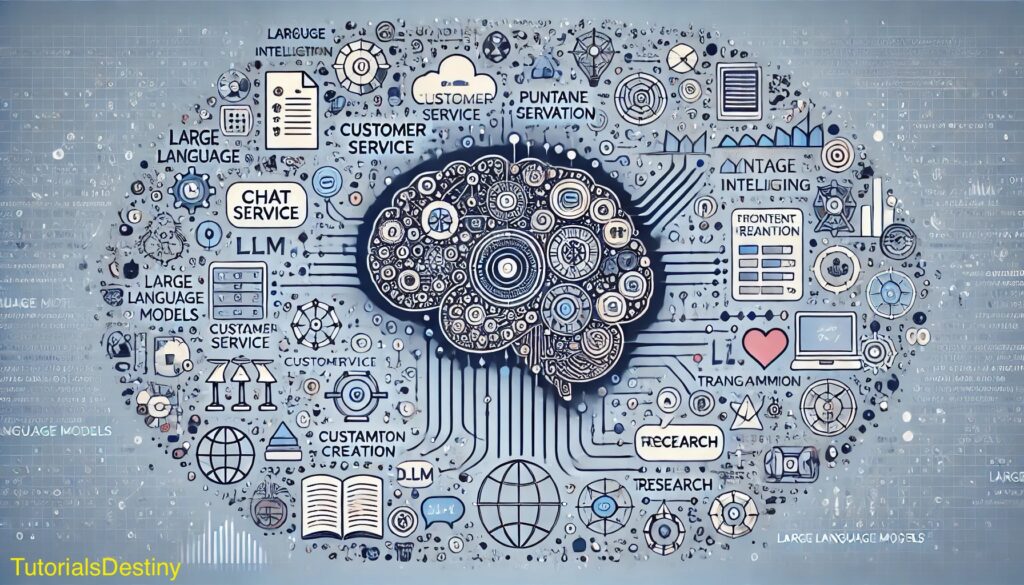Introduction to Large Language Models

Large Language Models (LLMs) are advanced artificial intelligence systems designed to understand and generate human language. These models are trained on vast datasets, enabling them to answer questions, write essays, translate languages, and even generate creative content. From OpenAI’s GPT series to Google’s BERT and beyond, LLMs are revolutionizing how we interact with technology.
What is a Language Model?
A language model (LM) is a type of AI model that processes and generates human language. Traditionally, language models were limited to simpler tasks like word prediction, but with the growth in computational power and data availability, they’ve evolved into powerful tools. LLMs can process and generate text based on the patterns learned from their training data.
The “Large” in Large Language Models
The “large” in LLMs refers to the model’s size, specifically the number of parameters—a model’s internal weights and biases that are learned during training. For instance:
• BERT by Google has 340 million parameters.
• GPT-3 by OpenAI has 175 billion parameters.
• GPT-4 has an even larger number, although OpenAI hasn’t disclosed the exact count.
This increase in parameters helps the model recognize complex language structures, idiomatic expressions, and context at a very high level.
How Are Large Language Models Trained?
The training of LLMs involves two main steps:
• Data Collection: LLMs are trained on large datasets consisting of text from books, websites, articles, and other sources. This diverse data enables the model to understand a wide range of topics.
• Learning Patterns: During training, the model learns patterns in the data through a process called “backpropagation,” which adjusts the model’s parameters to minimize errors in predictions.
The models are then “fine-tuned” to specialize in specific tasks or domains (e.g., customer service, legal assistance).
Architecture of Large Language Models
Most LLMs are based on a type of neural network architecture called a transformer.
Key features of transformers include:
• Self-Attention: This allows the model to weigh the importance of each word in a sentence relative to others, giving it the ability to capture context effectively.
• Layers and Multi-Head Attention: LLMs have multiple layers (like neurons in the human brain) that each capture different levels of language complexity, from basic grammar to nuanced semantics.
Applications of Large Language Models
LLMs have a wide array of applications:
• Content Generation: Writing articles, stories, or social media posts.
• Customer Service: Assisting with FAQs or even handling chatbots.
• Programming Assistance: Generating code or debugging.
• Language Translation: Converting text from one language to another.
• Medical and Legal Research: Summarising research papers or legal documents.
Limitations of Large Language Models
Despite their capabilities, LLMs have limitations:
• Data Bias: Since they learn from existing data, LLMs can inadvertently adopt biases present in the training data.
• Lack of Real Understanding: LLMs don’t truly understand language; they’re statistical models predicting likely word sequences.
• High Computational Cost: Training and deploying LLMs require immense computational resources, making them costly to develop and maintain.
Ethical and Privacy Concerns
With their power comes the responsibility to use LLMs ethically:
• Privacy: Models trained on publicly available data may inadvertently learn private information.
• Misinformation: The ability to generate text on any topic means LLMs could potentially spread misinformation.
• Job Impact: LLMs could replace certain job functions, particularly those based on routine language processing.
The Future of Large Language Models
Looking forward, we expect several advancements:
• Greater Efficiency: Smaller, more efficient models are being developed to bring LLM capabilities to everyday devices.
• Better Alignment: Researchers are improving techniques to align LLMs more closely with human values and ethical guidelines.
• Interdisciplinary Applications: LLMs may become integral in fields like education, healthcare, and law, assisting professionals with decision-making and analysis.
Conclusion
Large Language Models represent a significant leap in the field of artificial intelligence. By understanding how they work, their applications, and their limitations, we can better appreciate their impact on society and responsibly leverage their power. Whether you’re an AI enthusiast, a developer, or just curious, LLMs offer a glimpse into the future of human-computer interaction.
This post gives an overview of what LLMs are, how they work, their applications, and challenges, and where the field might be heading. Let me know if you need any adjustments!
Start a Free course on Artificial Intelligence
from Basics to Advance level
Leave a Reply